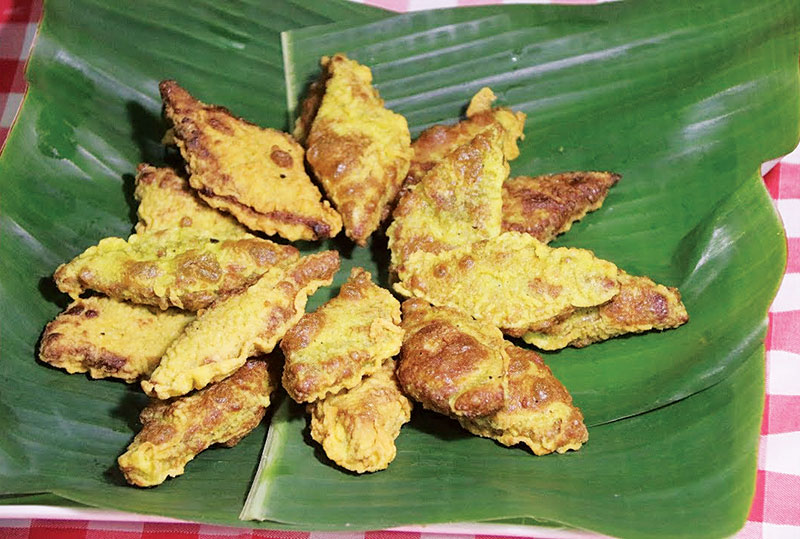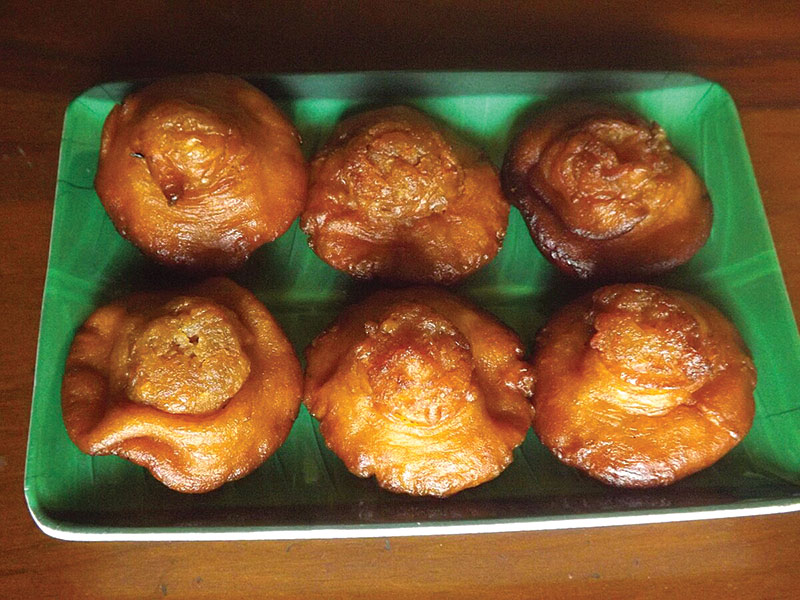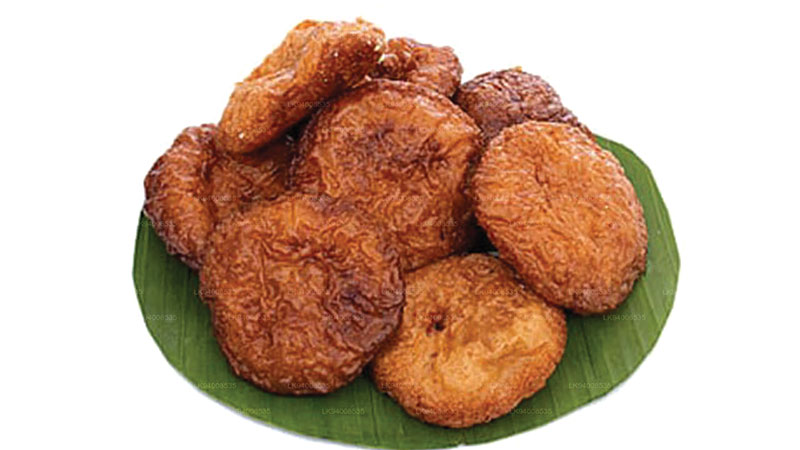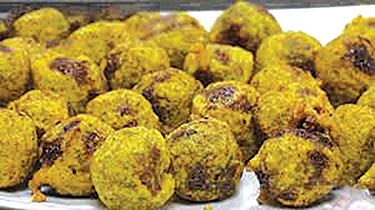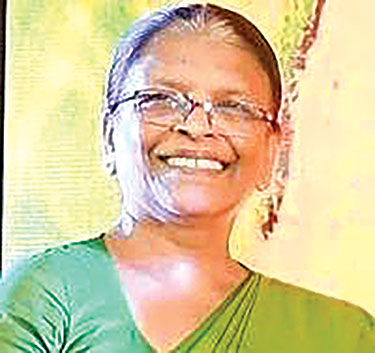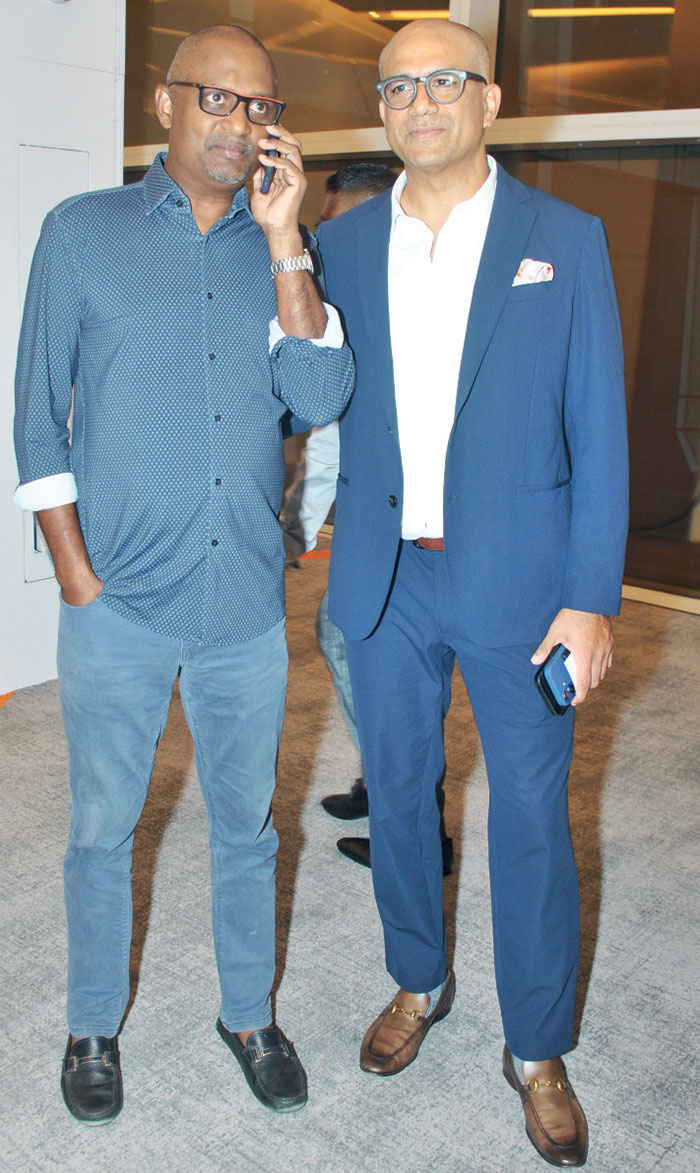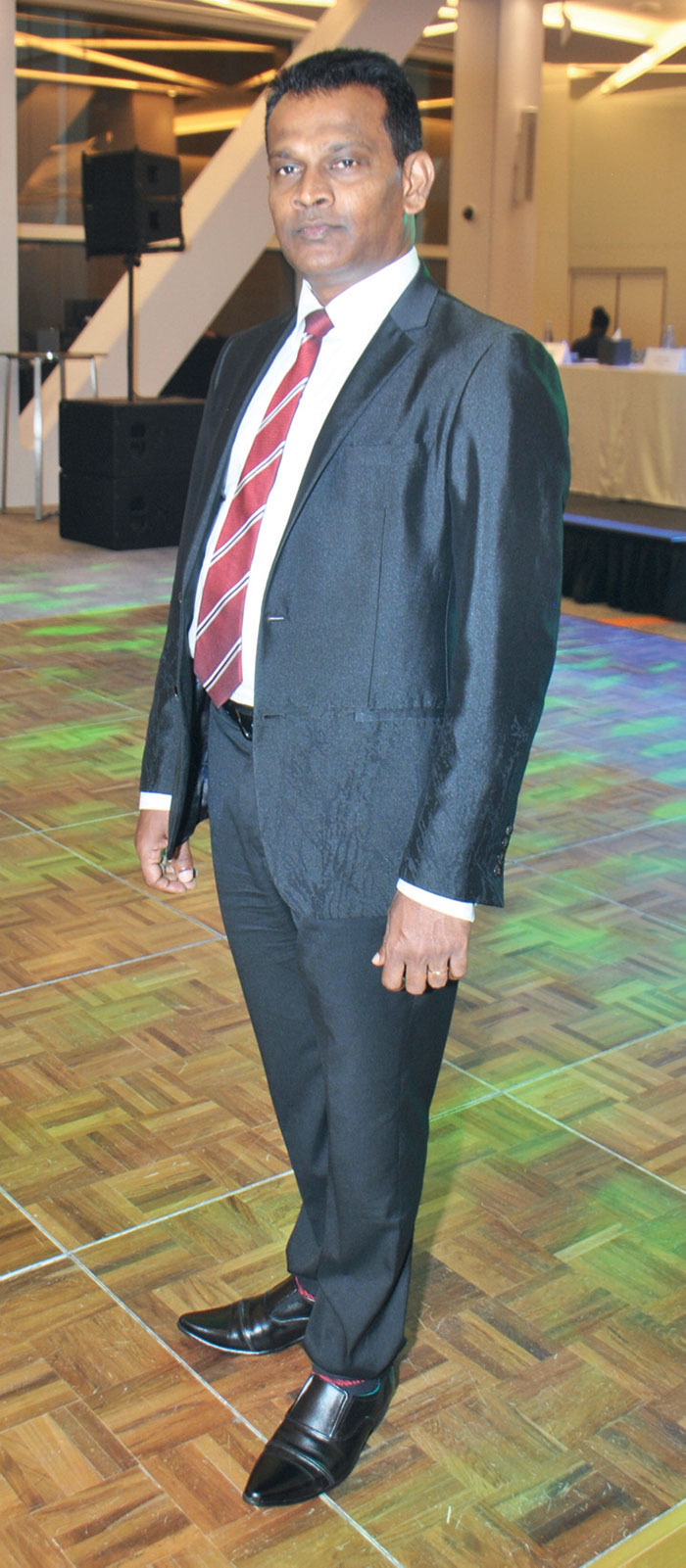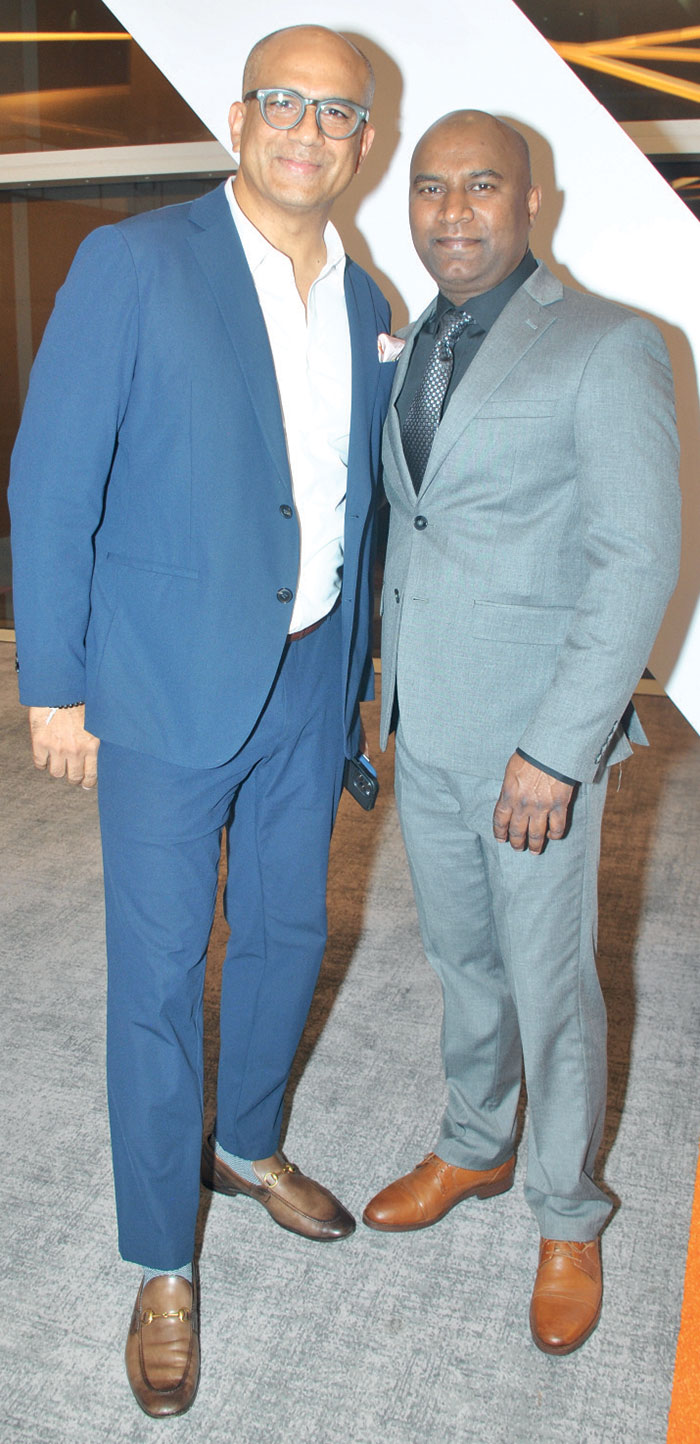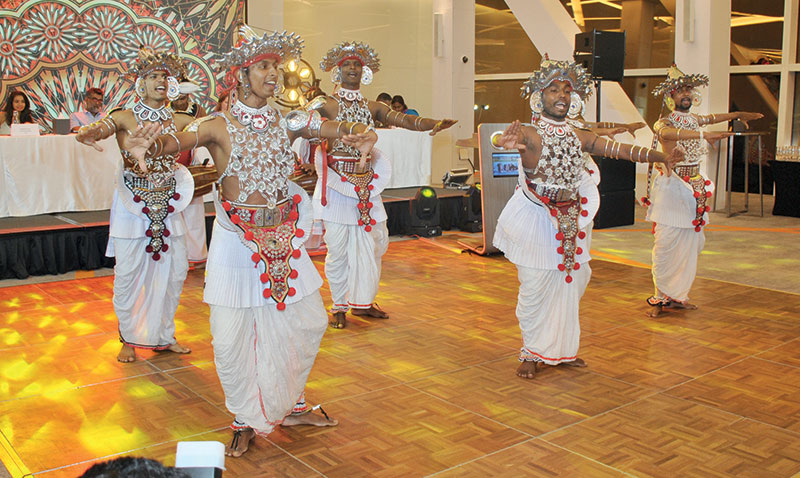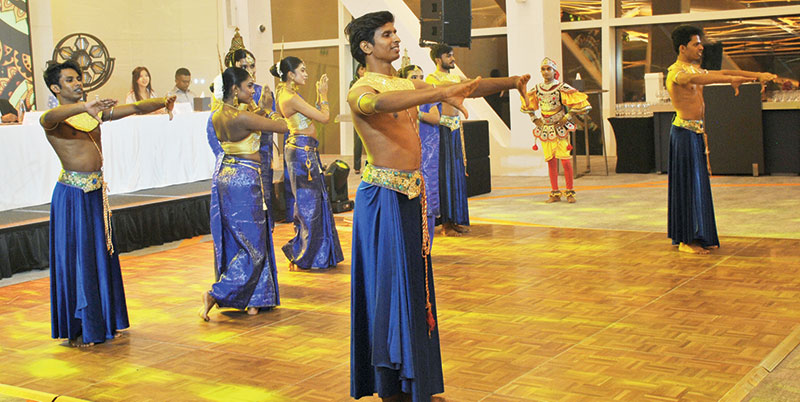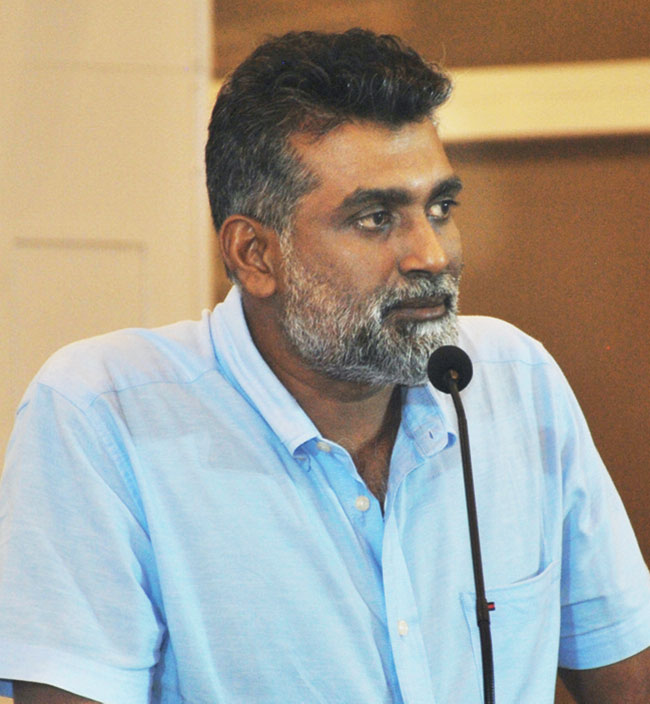Life style
Proposed elevated highway across wetlands provokes uproar
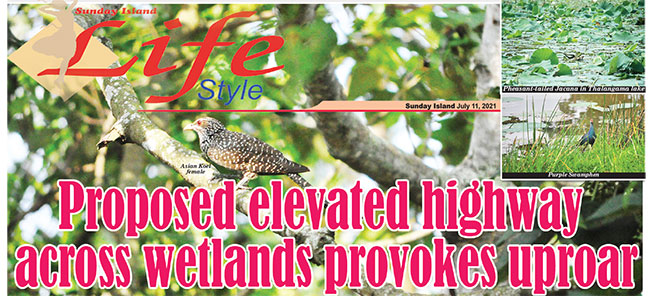
Environmentalists warn that if the second phase of the proposed Elevated Highway runs across Thalangama Environmental Protection Area, Ramsar Wetland city status of Colombo may be at stake. Residents lament that one of the most residential and peaceful areas of the city will be essentially made unlivable causing irreversible damage to the ecosystem.
by Randima Attygalle
The construction of five new flyovers and the four-lane Elevated Expressway connecting the New Kelani Bridge to Athurugiriya was launched by Prime Minister Mahinda Rajapaksa last month. The flyovers and the Elevated Expressway are planned to ease traffic congestion in Colombo, its suburbs and Kandy. The contract for the four-lane Elevated Expressway from the New Kelani Bridge to Athurugiriya entailing a budget of LKR 134.9 billion was awarded to the China Harbour Engineering Corporation (Ltd) to be completed in 36 months.
The 17.3 km long expressway is to be implemented in two phases- Phase 1 from New Kelani Bridge to Rajagiriya and Phase II from Rajagiriya to Athurugiriya. Phase II of the project has created controversy and uproar among environmentalists and the public as it’s to be built over the Ramsar listed Thalangama Environmental Protection Area (TEPA). Out the 10.4 km stretch of the second phase, 3.15 kms of road crosses the Averihena tank and paddy fields which are part of TEPA.
Despite Sri Lanka being a state party to the Ramsar Convention the proposed highway project is a gross violation of the provisions of the charter, charge residents from Thalangama and Averihena. Colombo District has already lost 40% of its wetlands resulting in massive floods and the proposed construction is a double whammy, they point out.
“Already water flows into our gardens when it rains heavily and erection of intrusions such as concrete pillars to accommodate an elevated highway will make things worse,” points out Prithiviraj Perera, a retired professional from the UN International Civil Service and Sri Lanka Public Services Institutions. Being exposed to noise and air pollution 24/7 would affect the quality of life of residents living on either sides of the wetland, whose homes are presently covered by trees and green habitats, Perera says.
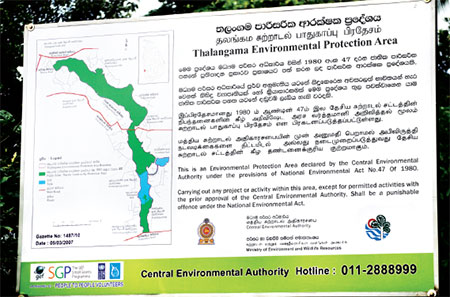 Thalangama wetland is one of the few remaining green patches near Colombo. It is also a birds’ paradise and a haven for nature photographers. “It is a picturesque site of scenic beauty which is popular for filming of TV programmes, films and taking of wedding pictures. The area is also popular for jogging, star gazing, bird watching and environmental educational tours,” points out the senior professional who notes that destruction of an internationally recognized Ramsar Wetland will impact directly on the Green Development Principles which are championed by the government under the ‘Vistas of Prosperity’.
Thalangama wetland is one of the few remaining green patches near Colombo. It is also a birds’ paradise and a haven for nature photographers. “It is a picturesque site of scenic beauty which is popular for filming of TV programmes, films and taking of wedding pictures. The area is also popular for jogging, star gazing, bird watching and environmental educational tours,” points out the senior professional who notes that destruction of an internationally recognized Ramsar Wetland will impact directly on the Green Development Principles which are championed by the government under the ‘Vistas of Prosperity’.
He says that the best alternative for the Expressway is to take the route from Makumbura, Kottawa through Ruwanpura and over the existing four lanes in Pannipitiya, right up to Battaramulla, which has already been mooted by several authorities. “This shall cause least damages to residents, housing and sensitive ecosystems with any extra costs of rerouting being financed through the issuance of ‘Green Bonds’ as done in many other countries.”
The second phase of the highway will plough through one of the most residential and peaceful areas of the city and will essentially make the area unlivable lament residents. The proposed route affects the residential property that has been in lawyer Rehan Almeida’s family for at least four generations. “According to the current route, the highway will go right across our property along Kaduwela Road in Battaramulla, completely destroying my home and partially destroying my father’s home. My brother’s house is narrowly missed by a matter of feet and will be rendered uninhabitable. The affect to our property is fatal. No amount of compensation can replace the damage caused. We will essentially lose everything, as we have been advised that the property will not be suitable for residential purposes any longer,” says Alemeida.
Several more houses and a sizeable number of small scale businesses will also be destroyed with absolutely no option to relocate, he says.
By plotting a route through the Thalangama wetlands, the country is also losing an asset which cannot ever be replaced, points out the lawyer who questions the logic of “cutting a peaceful community in half” and exposing residents to all kinds of pollution when an alternative route has been proposed by experts who have studied the impact and consequences of this project.
Almeida also charges that destruction of the environment by a project of this nature is a violation of the directive principles of state policy which are safeguarded under the Constitution. He further says that the solution is not to re-gazette the Thalangama wetlands to allow constructions but to find an alternative. “The task of the government is to safeguard our natural assets, not bulldoze them.”
Many farmers from the area who have been cultivating their ancestral paddy fields for generations lament the irreversible damage the proposed Expressway could cause to the eco system of the area. Most farmers in the area who cultivate traditional rice varieties also fear the threat of flooding if the proposed highway is realized.
It is also learnt that the Centre for Environmental Justice (CEJ) had filed a Writ petition in the Court of Appeal seeking an order preventing the construction of the Elevated Expressway over TEPA. It is also gazetted as an Environmental Protection Area by the Central Environmental Authority (CEA). Despite this, recently the Cabinet approval was given to re-gazette the area enabling the construction of the expressway whilst ‘preserving the environment.’
Director General, CEA, Hemantha Jayasinghe told the Sunday Island that the gazette is now pending observations of the Legal Draftsman’s Department. “Once the Legal Draftsman’s Department reverts with their comments, a careful EIA will be done by the CEA before relevant authorities decide if construction would continue or not along the TEPA,” Jayasinghe said.
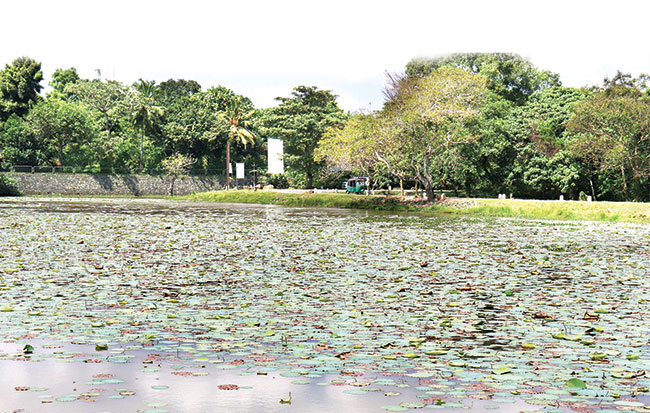 To recognize the importance of cities and urban wetlands, Ramsar Convention introduced the Wetland City accreditation scheme in October 2018. It provides an opportunity for cities that value their natural or man-made wetlands to gain international recognition and positive publicity for their conservation efforts. Under this scheme, 18 cities including Colombo have been listed as the first Ramsar Wetland Cities. Colombo is the only Ramsar wetland City in South Asia and the only capital city to be accredited.
To recognize the importance of cities and urban wetlands, Ramsar Convention introduced the Wetland City accreditation scheme in October 2018. It provides an opportunity for cities that value their natural or man-made wetlands to gain international recognition and positive publicity for their conservation efforts. Under this scheme, 18 cities including Colombo have been listed as the first Ramsar Wetland Cities. Colombo is the only Ramsar wetland City in South Asia and the only capital city to be accredited.
“Thus it is important for Sri Lanka to continue to protect the wetlands in Colombo in order to maintain this status. If the second phase of the Elevated Highway is to be built, it will cause significant impact to TEPA, one of the two protected wetlands in the Colombo Ramsar City site. (the other is the Jayawardenepura-Kotte Sanctuary),” points out Prof. Devaka Weerakoon from the Department of Zoology, University of Colombo. Prof. Weerakoon, an authority on wetlands, warns that such a move may result in withdrawal of the Ramsar Wetland city status of Colombo.
“This will be most unfortunate as many agencies worked very hard to achieve this status. Therefore, de-gazetting the EPA and building the road that is currently one of the options being considered, should not be taken as a major achievement but another example of a short-sighted decision taken under the label of development.”
TEPA provides many ecosystem services, especially functioning as a water source for paddy fields that are cultivated under the tank, source of food (freshwater fish), flowers, recreation and associated livelihoods and flood retention especially for highly populated metropolitan Colombo urban area. The proposed route across TEPA will not only spoil the aesthetic beauty and tranquility of the environment but also affect the air quality along the flyway corridor, points out Prof. Weerakoon. “The proposed flyway will have a significant negative impact on the quality of life of the inhabitants who are currently settled along the flyway corridor.”
The need for Phase I of the proposed Elevated Highway is very clear affirms Prof. Weerakoon. “It is quite beneficial to those who enter Colombo through the new Kelani bridge via the Katunayake Expressway en route to Borella, Rajagiriya or Battaramulla where most of the state agencies are located. Commuters have to spend a considerable time on the road due to traffic congestion in Dematagoda, Borella, Rajagiriya and Battaramulla resulting in unnecessary fuel usage and increased emissions. The expressway will provide fast access to these areas and suburban centres such as Pelawatte, Thalawathugoda and Maharagama. Further this will enable a large pool of motorists fast access to the Katunayake Expressway. Therefore the need for Phase 1 is very clear.”
However the controversial Phase 2 cutting across TEPA which will entail a heavy environmental cost needs to be reassessed including a detailed analysis of viable alternatives, maintains Prof. Weerakoon.
Pix credit: C. Kirinde
Life style
Kevum – Befitting a King
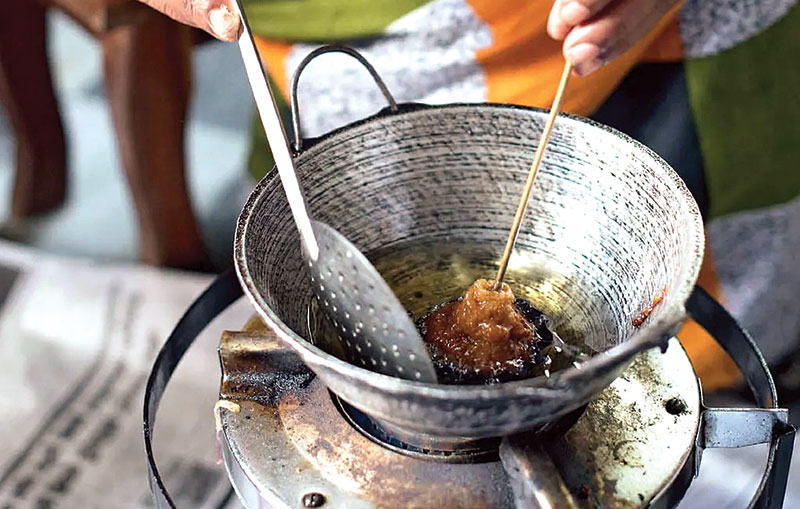
The avurudu table of any Lankan home is complete only when it is laden with kevum. Dating back to ancient times, many types of kevum are chronicled even in our classical texts. The Dutch rulers of the island are said to have relished them, some even asking if they grew on trees… A delicacy which was offered to visiting dignitaries, kevum was revered by our kings even in the battle field not only as an energy-booster but also as a wound disinfectant.
BY RANDIMA ATTYGALLE
The culmination of Avurudu preparations in my childhood with my grandparents was marked by the ritual of Kevum-making. Athamma would ‘book in advance’ the kevum specialist Soida Hami (Soida aachchi to us children), and install a special hearth in her back verendah for the grand moment. I would watch Soida aachchi in wonderment as her thick batter of rice flour and best of kithul treacle shaping into kevums in a hot wok of coconut oil. The long kevum koora in her nimble fingers would achieve the feat of the perfect konde. It was almost a rite of reverence, so much so I was not supposed to talk to her until the first batch of Konda-kevums was completed. Like many old-folk of her vintage, Soida aachchi believed that talking while the first few kevums are done would result in a flawed product.
She would then place each perfect Konda kevuma on a banana leaf for the excess oil to drain. Once the whole exercise was completed, she would place Konda-kevum in large earthen pots and store them in the dum messa or the storage area above the main hearth of the kitchen. She would spare me only one kevuma and the rest had to wait until the auspicious time on avurudu day!
Travellers’ records
Robert Knox an English sailor who was held in captive in the court of the Kandyan King Rajasinghe II and one of the prolific chroniclers of ancient Ceylon in his famous work, An Historical relation of the Island Ceylon documents on the sweet meats of Lankans with a special account of kevum.
‘They have several sorts of sweet-meats. One they call Caown. It is like to a fritter made of Rice-flower and Jaggory. They make them up in little lumps and lay them upon a leaf, and then press them with their thumbs and put them into a frying-pan and fry them in Coker-nut Oyl or Butter. When the Dutch came first to Columba, the King ordered these Caown to be made and sent to them as a royal treat. And they say, the Dutch did so admire them, that they asked if they grew not upon trees, supposing it past the Art of man to make such dainties.’ (Spelling as in the original Knox)
The account of Knox enables rich insights into this wonder of a sweet meat which enthralled many a traveller to the island including dignitaries. The European trader Cosmas who visited Ceylon in 545-550 AD, documents that along with gems, Kevum and Kalu dodol from Ceylon were taken to the Roman court of Emperor Claudius during the sixth century.
- Mun kevum
- Konda kevum
- Athirasa
Classical literature
Kevum dates back to ancient times and our classical texts such as the Ummagga jatakaya, Pujawaliya and Saddharma Ratanawaliya bear evidence to this fact. “Originally known as poopa this sweet meat came to be known as kevum in the Dambadeniya-Kurunegala era. Jathaka atuwa getapadaya mentions 18 kinds of sweet-meats found in the ancient Sri Lanka and among them are several types of kevum such as sendi kevum, mal kevum, athirasa, pena kevum, raa-kevum,” says Prof. Kusumalatha Lankamulla from the Department of Sinhala and Mass Communication at the University of Sri Jayewardenepura.
This scholar with research interest in Culture, Traditional and Modern Literature goes onto note that Mahawamsa in its 32nd chapter refers to two types of kevum in the context of alms offered by King Dutugemunu. The two types- thel kevum and maha de kuvum mentioned, were fried in ghee. “Many of our classical texts mention kevum in multiple festive contexts beyond avurudu. In Ummagga jathakaya, kevum is mentioned as a fitting gift to be taken when visiting parents. Saddharma Ratanawaliya refers to boxes of kevum or kevum pesa.“
An energy booster
Among the popular kevum types found today are Konda kevum, athirasa, mun-kevum, naran kevum and hendi-kevum. Although the ingredients used for each type may slightly differ, rice flour and treacle (now largely replaced with sugar) remain common to all. The much sought after Konda kevum which is relatively a later addition to the range of kevum found here at home is believed to have originated during the Kandyan period says Prof. Lankamulla. “During the Kandyan period, men were prohibited from cutting their hair off and they had to tie it in form of a knot on top of their heads. Konda kevuma is believed to have been inspired by this practice.”
Traditionally, Sinhalese soldiers were given a bag of kevum when going to war. History has it that King Dutugemunu went a step ahead and used kevum to treat wounded soldiers. His army used to prepare kevum months in advance and keep them exposed to air so that the mould can grow on them.
This mould in today’s language had ‘antibiotic properties’ and was used on the wounds of the soldiers to prevent them from festering. “In a bid to undermine the pride of place given to kevum as a super food by the locals, the British coined the famous derogatory adage: ‘Sinhalaya is a fool but is an ace at eating kevum’. (Sinhalaya modaya-kevum kanna yodaya)
Steeped in tradition
Superstitious beliefs surrounding the process of kevum-making are not uncommon and these vary from region to region in the island, says Prof. Lankamulla. Regardless of the region, several common traditions were followed by our ancestors and these still continue to be observed in several parts of the country, she says. “The frying pan with coconut oil to prepare the kevum was kept on fire at an auspicious time and village matriarchs who were highly skilled were mobilized for the occasion. Women also believed that they must refrain from talking when the first kevum is being made. For centuries, the first kevum was considered to be the ‘konduru kevum’, dedicated to the sledge-fly or the konduruwa. The village women would hang the first kevum up for the insects so that the rest would be unspoilt.”
With the passage of time, many Lankans, particularly city-dwellers depend on commercially available avurudu kevili including kevum. Although kevum is synonymous with avurudu, today people get to enjoy it round the year thanks to many sweet meat kiosks found in cities. Although these outlets have best sales during avurudu, they get plenty of orders from Lankans travelling abroad or coming home for vacation at other times of the year as well.
One such die-hard kevum fan is Uthpala Ranatunga from Ottawa, Canada. “My Loku amma (oldest aunt) makes it a point to pack me a parcel of best quality Konda kevum to take with me whenever I’m in Sri Lanka for a vacation.
I deep-freeze them for longer use and eat them sparingly,” says Uthpala to whom kevum is always a strong reminder of home. “Each time I indulge in them I feel nostalgic and miss home.”
Kevum is an integral part of the Lankan culture, finding its way from ancient classical literature to that of the contemporary including children’s literature and arts. The much-loved sweet meat is celebrated in the work of Sybil Wettasinghe – the iconic story teller and illustrator.
Come avurudu, we often hear the intonation of Lionel Ranwala, the eminent musician, vocalist and an authority on Sri Lankan folk music, whose tribute to the enduring legacy of this delicacy is one of the best in our times:
Me avurudu kale -sinaha weyan rale
Thel ihirunu kewum gediya wage…
Fashion
Festive glamour at Nethara

Nethara Collection ,is a world of export quality garments in Diulpitiya, Boralesgamuwa, is infused with an ultra festive spirit this season catering to the women of today. Unbelievable offers and discounts from Nethara for Sinhala anTamil new year. On selection of women’s clothing, ranges from casual options to formal occasion wear,all at friendly prices,to enhance your wardrobe this festive season.
Nethara collection, started small in 2017, but soon it outgrew, today with an ever increasing customer base, branded and non branded clothing this shopping centre has become very popular. Export quality , stylish dresses, crop tops, fancy blouses, trousers and many more to flaunt yourself and enhance your wardrobe.Their extensive collection, maintain low pricing allowing everybody to have a chance to shop till they drop dead. From casual wear to formal wear,they have women to men’s items like tee shirts, shirts for every occasion.
Nethara clothing has long remained a name that has struck a chord with Sri Lankan shoppers. “We believe our success has been based up on the premise that absolute sincerity towards customers and no matter what the economic situation that prevails, we try our level best to keep our prices low and within everybody’s budget, said managing director, Nethara Collection Sampath Kumara.
This April season Nethara collection brings an all new collection of export quality seasonal wear. Celebrate the season with exclusive offers made just for you! Dresses, blouses, casual, formal wear denim, men’s shirts and many more… world of limitless style and joy!
This festive season Nethara unwraps a celebration of warmth, style and sophistication. Immense yourself in a vibrant festive atmosphere as you explore thier collection under one roof 345 Boralasgamuwa With a focus on quality, affordability and customer satisfaction, Nethara export quality boutique invites you to celebrate the Sinhala and Tamil New Year in style.
(Zanita)
Life style
Sri Lanka tourism unveils strategic vision
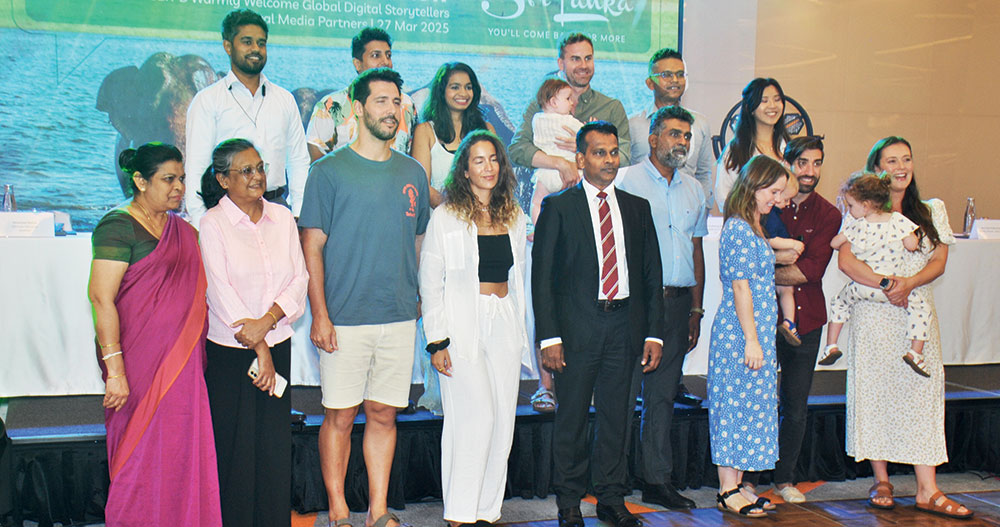
Sri Lanka Tourism Bureau hosted a landmark event at cinnamon Life for an ambitious campaign to spotlight Sri Lanka as a top travel destination. This initiative hosted international influencers and local media to capture the unique charm of Sri Lanka’s destinations. These travel influencers will share thier real time content across platforms like Instragrams Tik Tok and youtube amplifying Sr Lanka as a must visit destination. Many media personal, bloggers and influencers participated in this event which will take them on a tourism travel featuring some of Sri Lanka’s top destination.
Sri Lanka Tourism Promotion Bureau (SLTPB) hosted a landmark event at the Cinnamon Life Hotel, Colombo. The event was led by . Deputy Minister of Tourism, Prof. Ruwan Ranasinghe, with the participation of SLTPB Chairman Buddika Hewawasam, officials, travel influencers and their families, as well as journalists specializing in tourism sector reporting. The gathering set the stage for transformative initiatives aimed at bolstering Sri Lanka’s tourism sector and redefining its global image.
In his opening remarks, Buddika Hewawasam underscored the challenges facing the tourism sector, particularly the seasonal dip in arrivals during the summer months. “The next few years will be the most challenging period for all of us,” Hewawasam stated, emphasizing the need for international collaboration and strategic development. He further highlighted the critical role played by international travel influencers and media professionals in raising awareness of Sri Lanka’s hospitality and inspiring tourists worldwide to visit.
- Dileep Mudadeniya
- Deputy Minister of TourismProfess or Dr Ruwan Ranasinghe
- Guests
The Deputy Minister of Tourism, Prof. Ruwan Ranasinghe, detailed the innovative nature of the campaign and its importance in showcasing Sri Lanka’s rich heritage, natural beauty, and diverse travel experiences to mainstream and emerging tourism markets.
During the event, several prominent travel influencers shared their thoughts about Sri Lanka’s uniqueness as a destination. They highlighted that Sri Lanka is a country where travellers don’t need to worry about finding incredible experiences—nature has already done the hard work. The influencers remarked on Sri Lanka’s unparalleled diversity, noting that it is possible to experience a range of climates within just a few hours by travelling to different parts of the island. From sun-soaked beaches to misty highlands, and from lush forests to cultural treasures, Sri Lanka offers a world of adventures in a compact and accessible setting.
In comparison to destinations like Bali, which some influencers noted as overcrowded, Sri Lanka stands out with stable and balanced tourism activities. The event attendees were thrilled by the country’s warm hospitality, authentic DDirector cuisine with an impressive variety, long history, and rich culture. These qualities make Sri Lanka not only inviting but genuinely unforgettable for visitors.
The travel influencers in attendance expressed strong confidence in their ability to share this powerful message with the world. They were determined to shape international travel trends by showcasing Sri Lanka’s unique appeal, while also helping to attract new types of guests. The influencers represented a diverse range of travel segments, including family travellers, solo female travellers, honeymooners, and adventure seekers. Their efforts were supported by Sri Lanka Tourism officials and journalists representing both local and international media agencies.
The ‘Sri Lanka, A Story for Every Season’ campaign represents SLTPB’s first large-scale effort to boost summer travel through digital storytelling and influencer collaboration.
Featuring a curated destination familiarization tour, the campaign will spotlight wildlife safaris, cultural heritage, spiritual pilgrimage sites, scenic landscapes, and adventure tourism. Influencers will produce high-impact content for platforms like Instagram, YouTube, and Facebook, reaching over 2.2 million travel enthusiasts globally.
Sri Lanka Tourism shared impressive winter peak season results, with international arrivals reaching 665,295 by March 23, 2025—a marked increase compared to the previous year. These figures illustrate the sector’s potential for growth, and the campaign aims to sustain momentum throughout the summer months.
The event was a call to action for stakeholders to unite in elevating Sri Lanka’s global tourism appeal. With plans to generate over LKR 32 million worth of media coverage and connect with diverse travel segments, the campaign underscores Sri Lanka’s commitment to redefining itself as a leading destination for year-round travel.
By Zanita Careem
Pix by Darmasena Welipitiya
-

 Business2 days ago
Business2 days agoColombo Coffee wins coveted management awards
-

 Features3 days ago
Features3 days agoStarlink in the Global South
-

 Business4 days ago
Business4 days agoDaraz Sri Lanka ushers in the New Year with 4.4 Avurudu Wasi Pro Max – Sri Lanka’s biggest online Avurudu sale
-

 Business5 days ago
Business5 days agoStrengthening SDG integration into provincial planning and development process
-

 Business4 days ago
Business4 days agoNew SL Sovereign Bonds win foreign investor confidence
-

 Sports6 days ago
Sports6 days agoTo play or not to play is Richmond’s decision
-

 Features3 days ago
Features3 days agoModi’s Sri Lanka Sojourn
-

 Sports5 days ago
Sports5 days agoNew Zealand under 85kg rugby team set for historic tour of Sri Lanka



